#Fauno imagine
Note
since you seem so ecstatic to get a question, heres 6 of them! :)
What's a niche/uncommon whump thing you love? (Could be a trope, whump for a specific character, a setting, anything)
What's a movie/tv show/book/etc. you watched that had unexpected good whump?
Do you have a favorite/much loved whump movie/tv show/book/etc?
Do you prefer fandom whump or original whump or do you like them the same? Could you determine the balance of your love for each? (ie. 60/40, fandom/original)
What's your preferred medium for whump? (book, movie/tv, drawing, etc.)
What's a whumpblr blog and/or whump author (from any site) you love? What's something they've written, posted, or reblogged that you liked?
1
"What's a niche/uncommon whump thing you love? (Could be a trope, whump for a specific character, a setting, anything)?"
Well,The trope is ✨️chokehold✨️,Is just perfect to watch whumpee slowly driving into unconsciousness while their lungs are burning,And aslo that their pleads became more and more weak with time!
Perfect for faint trope too! And without any consequese besides hurt in the lungs and head!!!!
(Ah,An in the character, I literally choose the most underreted character in the more underreted fandom,Totally not SJM's ptotagonist,aka specimen 14,Of course not....*lying and totally hyperfixing on that fandom for the whump*)
2
"What's a movie/tv show/book/etc. you watched that had unexpected good whump?"
Somewhat,(And im still surprised) is the backrooms fandom.
I know,I KNOW, that was not the expected anwser
BUT
You can NOT imagine the amount of whump is on the fandom wiki,Most of it is writed poorly but there's trully some good content there
(Poor wanderers lmao)
3
"Do you have a favorite/much loved whump movie/tv show/book/etc?"
Well,I alredy say it, 'El laberinto del fauno' is a masterpiece
4
"Do you prefer fandom whump or original whump or do you like them the same? Could you determine the balance of your love for each? (ie. 60/40, fandom/original)"
Well
I would say that I have not read too much fandom whump but I would personally love it!!!!!!
Even so I read way more original so
Em
80/20 (original/Fanom) I would say,It depends on which fanom
5
"What's your preferred medium for whump? (book, movie/tv, drawing, etc.)"
Book I would say
(specifically fic s lmao)
6
"What's a whumpblr blog and/or whump author (from any site) you love? What's something they've written, posted, or reblogged that you liked?"
@theres-whump-in-that-nebula
@sillywhumpcreature
These two <3
4 notes
·
View notes
Text
Animation Night 138: Del Toro’s Pinocchio
Happy almost-new Gregorian year everyone!

No huge introduction tonight since it is late and I imagine Guillermo del Toro needs little introduction in these parts, and for biography, I would be paraphrasing Wikipedia’s quite thorough article. I also have seen fewer films of his than I’d like, so I could give you only broad strokes: he has a deep and very genuine enthusiasm for gothic horror monsters and comics, he likes to tell metaphorical stories about fascism framed through fairy tales, he’s really big on body horror.
Here’s the really condensed version. del Toro got his start on horror movies, made his name on comic book movies Blade II and Hellboy 1 and 2, helping to revive the genre, and through that he got enough clout to increasingly do original films like El laberinto del fauno (Pan’s Labyrinth) and The Shape of Water which fit the del Toro ‘sympathetic or alien monsters contrasted against fascism’ template, Pan’s Labyrinth especially being the iconic del Toro movie; two gothic horror type movies Crimson Peak and Nightmare Alley; and odd duck Pacific Rim, a gleefully silly spin on mech anime. And I’m a little embarassed to say that I’ve only seen Pan and Rim. I’d rather wait to say more until I’ve filled in the rest.
But I will briefly talk about animation, since it’s Animation Night! Although he began as an eight-year-old with a Super 8 camera, Del Toro was interested in using animation from very early on, originally planning to create his first feature film Cronos as a stop motion film until his studio was robbed. He worked for a long time in special effects makeup, and most of his films have had an animation component, often blended with practical effects. With Hellboy, del Toro deep inspiration from Ray Harryhausen’s stop-motion, and asked Tippett Studio (the studio founded by Phil Tippett of Mad God) to make the miniatures and puppets, but I’m not sure if he used stop motion there. Pan’s Labyrinth using elaborate animatronics, The Shape of Water touching up a suit with CGI. Pacific Rim mostly shot its action scenes in CG at ILM, with Del Toro asking them to use a saturated colour and draw inspiration from Hokusai(!) in the wave effects.

Oddly enough, Pinocchio is not the first time del Toro has made a fully animated something. That is actually a series of CG TV shows animated by Dreamworks, the Tales of Arcadia series. It begins with the urban fantasy Trollhunters (not to be confused with the Norwegian fantasy mockumentary), followed by the sci-fi fish-out-of-water 3Below and time-travel Arthurian isekai Wizards (not to be confused with the Bakshi film).
Del Toro is credited as the ‘creator’ on all three series, which turns out to mean he originally planned it as a live-action TV show, which he turned into a book - a book which got picked up for a film by Dreamworks, and then finally evolved into a TV series. I’ll admit, I haven’t really looked into this much more than that, but it’s apparently scooped up a lot of praise and many awards.
OK, so, enough preamble, Pinocchio then. It’s a famous novel from 1883 by Italian writer Carlo Collodi. I suspect you know how it goes, at least in the broad strokes: puppetmaker Gepetto creates a living puppet, but he wants to be a real human boy; he becomes a serious troublemaker, and gets cursed for it, famously with a nose that grows whenever he tells a lie. Like most novels of the time, The Adventures of Pinocchio was first serialised in a weekly magazine, before getting compiled into a massive volume compiling all of Pinocchio’s many misadventures. (I think it’s interesting how serial fiction is making a big comeback lately, but more on that elsewhere.) In the first part of the serialisation, it ends with... Pinocchio getting executed by hanging, I’m not even kidding, it was supposed to be a ‘be moral’ tragedy. However, if I’m reading the summaries right, Collodi decided to retcon this and serialise it into something longer.
There’s a lot of Pinocchio-related things coming out right now. Disney are continuing their pattern of tedious expensive CGI remakes of their early traditionally animated movies, there’s an upcoming Souls-like game Lies of P, and there’s even a Russian animated film Pinocchio: The True Story. I couldn’t begin to tell you what kicked off this Pinocchio fever, since the book has been in the US public domain since 1940 - not coincidentally when Disney’s first adaptation came out. I was a little tempted, not gonna lie, to do a night where we watch all of them, but I don’t think I could sit through that lmao.

I showed Disney’s original Pinocchio on Animation Night before. By virtue of its position in history, and the ludicrously complex animation, it has positioned itself as the definitive filmed Pinocchio - the one that all subsequent adaptations must in some way respond to. For more on that, read Animation Night 84: The Walter Dismey.
Funnily enough I actually I fell asleep during that one (I was very tired that day and in a very cosy place...), so I’m actually going to watch it again. It is relevant, because that Disney film was part of del Toro’s inspiration. He set out to make his Pinocchio as far back as 2008, describing it as a lifelong passion project, and that he appreciated what he called horror-movie like aspects of the original as well as the traditional animation. Wanting to set his one apart, del Toro stumbled on the designs of illustrator Gris Grimley, and hired him. Along with Grimley, he found a co-director in Mark Gustafson, a stop motion animator who’d worked with Wes Anderson on Fantastic Mister Fox and evidently had some experience with working with normally live-action directors. Later cam art director Curt Enderle from Laika and usual collaborator del Toro Guy Davis to design characters; the models were built over here by a specialist company called Mackinnon & Saunders. For more see here.

One of the things that interests me reading about it is that the animation is described as being very naturalistic, with a lot of attention paid to blinking, shifts of gaze, and that kind of thing. That sounds like a fascinating angle to bring to stop motion, and I hope I’ll have the energy to write about it after the film. Narratively, I’ve avoided learning too many spoilers, but I know it involves an ‘Italian youth training camp’ so I think I can guess how that’s going to play given del Toro’s usual themes. But we’ll see! I’m told there might even be songs.
I think that’s all I want to write tonight. So here’s the plan! We’ll take another, more wakeful go around OG Disney Pinocchio (1940), and then dive into the exciting new flavour of anti-fascist stop motion Pinocchio (2022).
Animation Night will go live now at twitch.tv/canmom, we’ll begin the movies in about half an hour at 20:40 or local equivalent. Would love to see you there!!
5 notes
·
View notes
Photo

I’ve just watched del toro’s pinocchio. First i want to say; it’s not a kids movie. Nope not at all. The movie has very much dark themes in it such as dead and war. But there’s also songs. The movie has great music. Some of them remind me of the shape of water. There are a few of nods/cameo’s of other del toro movies such as pan’s labyrinth and hellboy. For example i’ve noticed the outlines of the fauno in a glass window. The woodfairy looks like the angel of death while her sister looks like the fauno mixed up with another one of del toro’s monsters. I even mean to have seen someone that looked like Doug (maybe it’s my imagination). I laughed with some scenes.Pinocchio is such a loveable great character. The movie starts off very sad and ends off very...sad. Y’all going to need those tissues while watching it...Mr del toro and your whole crew i thank you for making the only good pinocchio movie (that came out this year). Disney can learn alot from you. It’s creative, it’s pinocchio but not a repeat like many others are,it’s straight from the heart and not made as a cashgrab. So if you have the time, please go watch it.
2 notes
·
View notes
Text
Draft 01
MI4017: Films of Filmmakers.
Sasindi Rathnapala.
Film: Pan's Labyrinth
Analyzing the film: Pans labyrinth (2006)
Guillermo Del Toro a Spanish writer create one of the darkest fantasies, El Laberinto Del Fauno (Pan’s Labyrinth). The synopsis of the film is about a princess Moana of an underground realm. She was brave enough to face the danger and pursuer her aim to travel to human world. After she left her home, she could not remember who she was before. She suffered through affliction and pain until her death. King of the underground realm had faith that one day her daughter will return to the realm. After 1940s post-civil war in Spain, a girl named Ofelia traveled to his stepfather with her mother Carmen and unborn half-brother. The hardships she endured in that period until she was murdered by her stepfather in the labyrinth. By the guidance of faun Ofelia is challenged with three tasks prove as the chosen one to return to the underground realm as the princess. Beside her journey a team rebelling against fascism to have same rights as humans to live in peace, show a different perspective of the narrative.
The narrative of the Pan’s labyrinth is created as a R rated film because of graphical violence included in the film. Most of the violated scenes are occur by the brutal actions of Captain Vidal or in a traumatic scene occur caused by the fascism. The film contains a lot of blood. The opening scene of the movie show the death of Ofelia, she is sacrificing her blood to open the gates to the underground realm on a full moon. The blood dripping from her nose shows the film does not have a happy start or an ending. In the scene the blood flowing is shown in reverse and the camera are zoomed into her eyes. He facial features show she was satisfied of what happened and her pain at the same time. It takes us to a nonlinear narrative which a past action is recalling to her mind at her last moments.
"A long time ago, in the underground realm, where there are no lies or pain, there lived a princess who dreamed of the human world. She dreamed of blue skies, soft breeze, and sunshine. One day, eluding her keepers, the princess escaped. Once outside, the brightness blinded her and erased every trace of the past from her memory. She forgot who she was and where she came from. Her body suffered cold, sickness, and pain. Eventually, she died. However, her father, the king, always knew that the princess' soul would return, perhaps in another body, in another place, at another time. And he would wait for her, until he drew his last breath, until the world stopped turning..."
-The Faun
In the opening scene of the film represent the escapism theme where princess Moana escape for experience a better place out of her home wishing for blue skies, soft breeze, and sunshine. The protagonist of the story admires reading fairytales. When Ofelia and her mother Carmen travel across the country to Captain Vidal, her new stepfather, Carmen address her that she is not young anymore to fill her head with fairytales. Ofelia did not much care about what others say she listen to her own intuitions and on own imagination. Disobedient is a main theme used by Guillermo in this film. Ofelia is very disobedient to her mother, stepfather, faun, and fairies. She disobeys faun’s instructions in her second task. In the book I clearly says that she uses her key in the middle lock, but she disobeyed the instruction and unlocked the left lock.
“You will see a sumptuous feast, but do not eat or drink anything. Absolutely nothing. Your life depends on it.”
-The Faun
Ofelia is not supposed to eat from the pale man’s table. She disobeyed the faun and fairies who try to stop her and ate two grapes.
Fantasy vs reality is another theme consistently use in the film. In Fantasy world of Ofelia, a stick insect which look like a fairy, faun, doors open by drawing by a magic chalk, walls shifting in the labyrinth. Rebelling for fascist military after Spain civil war, political power to murder anyone by higher ups, toxicity of people, female empowerment by actions of Mercedes. Genre of Pan’s labyrinth are dark fantasy, horror, drama, war.
In the beginning Ofelia found a stone with a craving of a faun she fixed the puzzle replacing his missing eye, the entrance of the labyrinth has a faun structure head, a statue in the labyrinth a faun holds a girl and a baby, faun is a motif which show the guidance for the path. The watch Captain Vidal is keeping belong to his late father. Vidal’s father is a solider as him fight for government. Watch symbolizes the fascism ruthless qualities run down for generations in his family. Captain Vidal only wanted to continue his generation by been a father to continue his bloodline and traits. The moral of the narrative is disobedience. Other than the protagonist Mercedes disobey Captain Vidal’s orders and help his brother to rebel against them. Doctor Ferreiro disobey to help a rebellion to die quickly without suffering and for the protection of other rebellions.
Ofelia, eleven years old girl in her early puberty stage. she lived her life within the pages of books. Her looks and characteristics are similar to Alice in wonderland, Alice also escaped to another world through a hole near a huge tree and when comparing to pan’s Labyrinth, Ofelia’s first task is to go through an old died tree to feed the stones to a giant toad. Carmen dresses Ofelia in a nice dress which is similar to Alice, dress in the first Walt Disney movie. Her pale white complexion, red lips, innocent facial features, determined, compassionate nature towards innocents. Ofelia is a courageous girl faces challengers fearlessly. She is adventurous and seeking new things to distract her from reality. Carmen remarried to Captain Vidal having a baby of them. Her first marriage child is Ofelia. Carmen is a pretty woman, she is obeying to his husband, even she is emotionally hurting, she will not stand up for herself. She loved her daughter trying to provide every facility to her. When carmen took a dress and shoes for Ofelia, she is excited to see her daughter in a dress she chooses. It proves that carmen loved her daughter. Captain Vidal is a ruthless person does not think twice to hurt someone. If someone disobey him, he will kill him. He works on time, do his best to stop the rebellions. Mercedes is responsible of the housework and looking after Carmen, Ofelia. She takes huge risks to stay in spice in disguise, get information of the next moves of Captain. A brave woman who stands up for rebellion instead of torture. Ofelia is much closer to Mercedes she asks about her believes about fairies. Ofelia is more open to Mercedes rather than to her own mother.
0 notes
Text



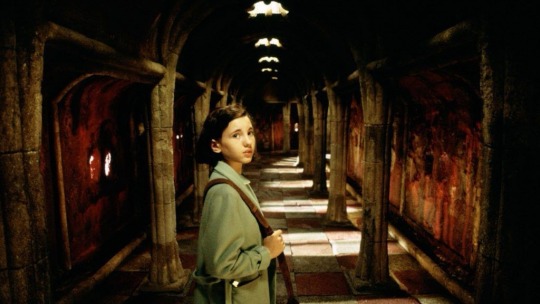

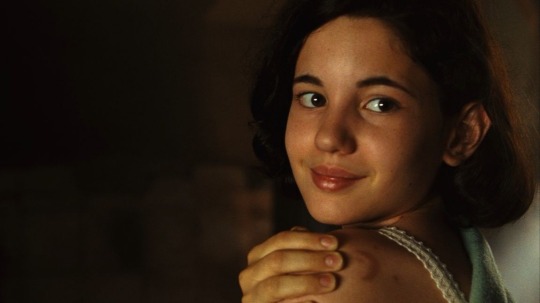
“The door is locked.”
“In that case, create your own door.”
— The world of imagination is boundless.
Pan’s Labyrinth (2006) dir. Guillermo del Toro
#pan's labyrinth#el laberinto del fauno#guillermo del toro#period drama#pan#amazing#cinematography#horror#movie#dark fantasy#fantasy#doug jones#fairy#imagination#inspiration#quote#monster#aesthetic#child actor#watch also#hellboy#pacific rim#crimson peak#the shape of water#movie recommendation
181 notes
·
View notes
Quote
Millions of spiritual creatures walk the earth
Unseen, both when we wake, and when we sleep:
All these with ceaseless praise his works behold
Both day and night: how often from the steep
Of echoing hill or thicket have we heard
Celestial voices to the midnight air,
Sole, or responsive each to other’s note
Singing their great Creator: oft in bands
While they keep watch, or nightly rounding walk
With Heav’nly touch of instrumental sounds
In full harmonic number joined, their songs
Divide the night, and lift our thoughts to Heaven.
Thus talking hand in hand alone they pass'd
On to thir blissful Bower; it was a place
Chos'n by the sovran Planter, when he fram'd
All things to mans delightful use; the roofe
Of thickest covert was inwoven shade
Laurel and Mirtle, and what higher grew
Of firm and fragrant leaf; on either side
Acanthus, and each odorous bushie shrub
Fenc'd up the verdant wall; each beauteous flour,
Iris all hues, Roses, and Gessamin
Rear'd high thir flourisht heads between, and wrought
Mosaic; underfoot the Violet,
Crocus, and Hyacinth with rich inlay
Broiderd the ground, more colour'd then with stone
Of costliest Emblem: other Creature here
Beast, Bird, Insect, or Worm durst enter none;
Such was thir awe of Man. In shadie Bower
More sacred and sequesterd, though but feignd,
Pan or Silvanus never slept, nor Nymph,
Nor Faunus haunted. Here in close recess
With Flowers, Garlands, and sweet-smelling Herbs
Espoused Eve deckt first her Nuptial Bed,
And heav'nlyly Quires the Hymenæan sung,
What day the genial Angel to our Sire
Brought her in naked beauty more adorn'd
More lovely then Pandora, whom the Gods
Endowd with all thir gifts, and O too like
In sad event, when to the unwiser Son
Of Japhet brought by Hermes, she ensnar'd
Mankind with her faire looks, to be aveng'd
On him who had stole Joves authentic fire.
Thus at thir shadie Lodge arriv'd, both stood
Both turnd, and under op'n Skie ador'd
The God that made both Skie, Air, Earth and Heav'n
Which they beheld, the Moons resplendent Globe
And starrie Pole
John Milton, from Book IV in Paradise Lost, lines 684-724.
line 688. divide the night: into watches. Roman armies sounded a trumpet when changing the watch; angelic guards do it to multipart music (”full harmonic number”).
line 690. blissfull bower: cf. Spenser’s account of the bower within the Garden of Adonis where Venus sequesters the mortally wounded Adonis from “stygian gods” (FQ III.6.43–49).
❧
“But wondrously they were begot, and bred
Through influence of th'heauens fruitfull ray,
As it in antique bookes is mentioned.
It was vpon a Sommers shynie day,
When Titan faire his beames did display,
In a fresh fountaine, farre from all mens vew,
She bath'd her brest, the boyling heat t'allay;
She bath'd with roses red, and violets blew,
And all the sweetest flowres, that in the forrest grew.
Till faint through irkesome wearinesse, adowne
Vpon the grassie ground her selfe she layd
To sleepe, the whiles a gentle slombring swowne
Vpon her fell all naked bare displayd;
The sunne-beames bright vpon her body playd,
Being through former bathing mollifide,
And pierst into her wombe, where they embayd
With so sweet sence and secret power vnspide,
That in her pregnant flesh they shortly fructifide.”
(Edmund Spenser, Faerie Queene, Book III.6.6-7)
❧
“There wont faire Venus often to enioy
Her deare Adonis ioyous company,
And reape sweet pleasure of the wanton boy;
There yet, some say, in secret he does ly,
Lapped in flowres and pretious spycery,
By her hid from the world, and from the skill
Of Stygian Gods, which doe her loue enuy;
But she her selfe, when euer that she will,
Possesseth him, and of his sweetnesse takes her fill.”
(Edmund Spenser, Faerie Queene, Book III.6.46)
❧
hinc alta sub rupe canet frondator ad auras, “on that, under the towering rock, the woodman’s song shall fill the air” [canet ad auras—cf. “Celestial voices to the midnight air”]
(Vergil, Eclogues I.57, trans. H. R. Fairclough and G. P. Goold)
❧
“Such places the neighbours imagine to be haunted by goatfoot satyrs and nymphs, and they say there are fauns, by whose night-wandering noise and jocund play they commonly declare the voiceless silence to be broken, with the sound of strings and sweet plaintive notes, which the pipe sends forth touched by the player’s fingers; they tell how the farmers’ men all over the countryside listen, while Pan, shaking the pine leaves that cover his half-human head, often runs over the open reeds with curved lips, that the panpipes may never slacken in their flood of woodland music.”
(Lucretius, De rerum natura, IV.580-89)
Haec loca capripedes satyros nymphasque tenere/ finitimi fingunt, et faunos esse loquuntur,/ quorum noctivago strepitu ludoque iocanti/ adfirmant volgo taciturna silentia rumpi,/ chordarumque sonos fieri dulcisque querellas,/ tibia quas fundit digitis pulsata canentum,/ et genus agricolum late sentiscere, quom Pan,/ pinea semiferi capitis velamina quassans,/ unco saepe labro calamos percurrit hiantis,/ fistula silvestrem ne cesset fundere musam.
3 notes
·
View notes
Text
A Tapestry of Lace and Silk : the visual aesthetic and costume design of Crimson Peak (2015)
In the dark corners of an ancient mansion, you hear the rustle of a long dress on the floor, there behind a closed door, lies some ghosts and secrets that should never be unearthed.
A woman walks in the silence.
Crimson Peak (2015) is a movie directed by Guillermo Del Toro, and is one of the most obvious mainstream examples of the gothic romance in cinema in the recent years. With a story full of ghosts, a secret, a haunted house and of visuals directly inspired by the mid-century gothic romance book covers. This movie is visually highly stylized and immersive in a way I think a lot of filmmakers and studios tend to shy away from.

While Guillermo Del Toro’s movies tend to always be very stylized and visually cohesive, Crimson Peak is truly the one, in my opinion, where the production design was at its most compelling and beautiful. To me, it’s obvious how much care and attention has been given to even the slightest of details, to create the perfect visual identity for this film. I have read once that the gothic was very decorative, as a genre. From the dark mansions, and the flowing nightgowns to the flickering lights of the candles and the creaking floors. The ~aesthetic~ is something that is very important to a gothic romance story. It’s all in the atmosphere, as well as some important elements of the story in itself, that make a gothic romance. Gothic Romance is a genre that you have to lean into, and Guillermo Del Toro perfectly understood it when it came to Crimson Peak.
Before we go more into it, i just want to warn you all that there’s probably going to be spoilers in this article. I will try my best to avoid being overly blatant about what happens in the story in itself, because that is not my focus. My focus during this article will be on the production design of the movie, the way this movie looks and has been designed, especially when it comes to the costumes and the outfits the characters wear throughout the movie. I mostly want to go deep into the visual aesthetic of this film, from the decors and visual themes to the dresses and outfits that were created for this story. I want to talk about the visual aspect of the movie and how it translates within the genre of gothic and the medium of filmmaking.
Guillermo Del Toro : the cineast
Guilerrmo del Toro is a mexican director mostly known for having a very distinct style of dark fantastical movies often featuring monsters, myths, the folklore and fairytales. His movies alternate between being made in spanish or english. His stories and movies often explore the dark side of the fantastical, of fairy tales and stories told after the dark. and yet. they have a hopeful side to them .
While a lot of his movies were successful, I do think it’s El Laberinto del fauno (2006) (Pan’s Labyrinth) that really established him as a thriving filmmaker, despite how niche a lot of his movies and stories are. Which, by the way, as a quick aside, Pan’s Labyrinth is a very formative movie to me, I watched the year it came out, when I was 11 years old, my dad brought the DVD home, thinking it was a movie for children. And well. It was not. I ended up being TERRIFIED and yet mesmerized and this was my first contact with Guillermo Del Toro as a filmmaker but it certainly wouldn’t be the last. His movies are crystallized in my memory, and they awakened in me a love of this more gothic and fairy-tale inspired horror. He's definitely a movie director that brings his unique touch to whichever work he’s doing.
The Gothic is a very prominent part of Del Toro’s work, which he calls Gothick (and is indeed a word that represents the genre that got started by Horace Walpole’s book The Castle of Otranto in 1764) and he describes the relationship he has with this genre as “a way to discover beauty in the monstrous” The protagonists of Del Toro movies often embrace the darkness that exists around them and within themselves. For Del Toro, the gothic is the “only genre that teaches [us] to understand otherness.” You can see it in the narrative of so many of his movies, which culminates in The Shape of The Water, where the monster ends up being the victim of society, and the real monster is the character of Michael Shannon, who represents the pressure of society, the norms and accepted and what can happen if you deviate from what is accepted.
The narratives of Del Toro’s movies reject authorianism in any shape or form, whether the societal authorianism or the narrative ones, and this makes for a way of storytelling that often turns around all expected tropes.His movies are, at their core, anti-fascist and, in my very humble opinion, very relevant during our current political climate on an global level. I really do not feel like I am the right person to dive deep into this subject in a small article on the visual aesthetic of one of Del Toro’s movies, but I want to recommend the thesis The Dark Fantastic of Guillermo Del Toro : Myth, Fascism, and theopolitical Imagination in Cronos, The Devil’s Backbone, and Pan’s Labyrinth by Morgaan Sinclair. That thesis is widely informative and interesting to read and will probably dive deeper in those themes that are always somewhat present in every Del Toro movie.
He loves using “typical” genre stories and making them his own. From folk tales, fairy tales, vampire stories, legends, he uses these narrative motifs as a template for his stories, but he always subverts them in one way or another, exploring the darkness within. And this is what he also did with Crimson Peak, but now with the gothic romance genre as his template. Gothic Romance is one of those genres that is very formulaic in some ways, it has very common tropes and themes that are often used. For example, the way he explores the gothic house and its entire symbolism in his early movie The Devil’s Backbone (2001).
[These old-Gothic notions insinuate themselves in the Gothick terrain of del Toro’s films. The Devil’s Backbone, a ghost story set in a remote orphanage during the Spanish Civil War, seems at first glance to be a classic Gothick romance, which, as del Toro reminds us in his commentary, focuses on the house, the domicile, as an emblem and warped container of the human self. This symbolically charged structure, he says, always conceals a “dark secret,” linked to a treasure and deep passions, “that is buried in the past and affects the people living in it.” At the center of the darkness stands “a very pure hero—a new set of eyes to explore the secret and through the purity of his heart unravel the mystery.”]
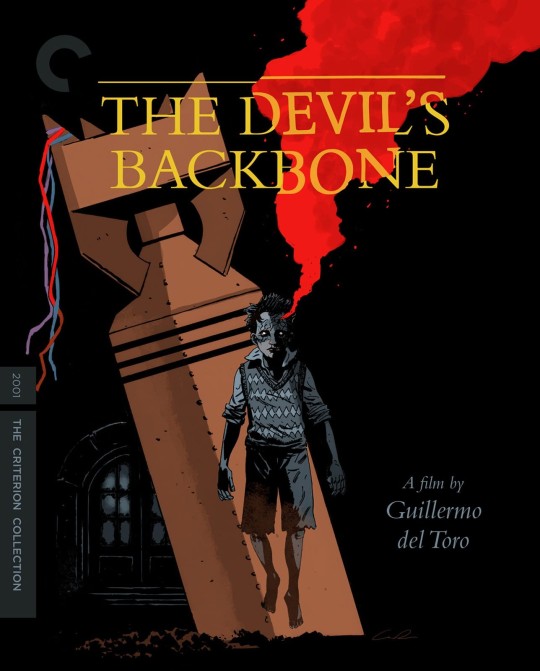
When it comes to his films, Del Toro tends to often use archetypes as a way to effectively communicate certain concepts, but more often than not, he will turn these archetypes upside down. Del Toro tends to also use a lot of symbols in his movies, weaving a tapestry of overarching themes and meaning. He gives depth to his stories by a use of various artistic and literary references, historical references. building a story that contains layers upon layers. This depth also translates to the visual aspect of his movies, as Del Toro movies tend to be carefully and precisely crafted. The aesthetic is, as one might say, on point. From the somber and fantastical creativity of Pan’s Labyrinth to the epic and vibrants colors of Pacific Rim. Crimson Peak is, to me, one of the most visually beautiful and compelling movies of Del Toro, and this is what we’re going to get into a bit later.
A ghost story:
This story starts at the end. This is a narrative device Del Toro also used with Pan’s Labyrinth, the movie starts with the final scene, and we know that something terrible is going to happen, and it just keeps the tension and stakes high during the entirety of the movie, as we keep wondering when things will take a turn for the worse.
We can see Edith Cushing (Mia Wasikowska ) wearing her white nightgown, in a scene of fog and piercing white. Her blond hair is flowing down on her shoulders, her face is pale, and her hands.
Her hands are drenched in blood.
The first sentence of the movie is then spoken : “Ghosts are real. This much I know.” This immediately sets the tone for the rest of the movie.

And then. It goes back to the beginning, when she was just a young child, at the moment her mother died, when the ghost of her mother, veiled in black lace, came to warn her, to beware of Crimson Peak…
Edith Cushing is a young woman living with her father and who dreams of becoming a writer. She keeps trying to publish her story, not a ghost story, but moreso a story with a ghost in it. “The ghost is a metaphor” she says. A metaphor for the past and for regrets and violence that still permeates a place. She then meets Thomas Sharpe (Tom Hiddleston), an english baronet without fortune, and his sister Lucille (Jessica Chastain). After the sudden (and suspicious) death of her father, she marries Thomas and follows him and his sister back to England, in their strange mansion that stands isolated in the midst of english hills, atop a source of red clay. The Sharpes are an aristocratic family with no fortune and a decrepit mansion where strange things happen, where ghosts roam.
There’s also a social commentary here on the changing social norms and social classes. While the Sharpes are an aristocratic family, owning land and a title, they are not rich. Their clothes are good quality, made from good materials and hand crafted, but they are also old and not of the current fashion. They are in a very strange place socially, being higher up on the social class and yet, being broke and trying to figure out how to get money to take care of their crumbling estate.
Ghosts are real, we need to remember, and are a reminder of what has been forgotten and what has died. The past is still lingering on in the present, and violence of the past will not go unpunished. The ghosts of Crimson Peak are terrifying. I do not want to say much about them, because it would reveal too much about the plot and the story, but I want to talk about them in terms of visual design. The ghosts of Crimson Peak are terrifying, they are skeleton-like, and red. Vibrant red. They are nothing like I have ever seen before in terms of ghosts, and this is yet another way Crimson Peak sets itself apart from other movies.
Lucille says something at the end of the movie, and I will not say anything about the plot, so fear not for spoilers, she says “but the horror… the horror was for love” and I do think it says so much about the movie and about the genre. Gothic romance is not really a love story, but it’s not strictly a horror story either. It’s a blend of love and horror. And sometimes… the horror, the horror will be for the sake of love.

The building of a haunted house
Production design, when it comes to movies, relates to everything that has to do with the visual identity of the movie. The look and the stylistic choices that are made to make the movie look the way it does. From the costumes, to the sets, to the decor, and all the small details, production design is one of the most important parts of constructing a movie. It’s those elements that make out how the movie will look and what it will communicate to its audience.
The production designer works on all the aspects that pertains to the visuals of the movies, along with the director of photography. They manage everything from the costume, the sets and the decor. And they work closely with the director to craft the visual identity of the movie. Guillermo Del Toro always draws from a very vast range of thematic and visual inspirations when it comes to his movies : from gothic architecture, symbolist art, the surrealists, but also more popular inspirations such as comic books and even video games. So many of these elements are brought and matched to visually create a layered look to the film.
The visual storytelling, the ambiance, the atmosphere, all of these elements are a huge part of what makes Crimson Peak truly interesting. The visuals of the movies were not an afterthought to the script, but were an integral part of how the movie was constructed. Under the directives of Guilermo Del Toro, Thomas E. Sanders [Dracula (1992) ; Braveheart (1995)] constructed an intricate and vibrant appearance for Crimson Peak, which I think is one of the most memorable components of the film.
This movie takes the canons of gothic horror and gothic romance and embraces them, whether it is narratively speaking or visually speaking. I always love a story that leans heavily into its genre and its tropes and convention, only to make use of them in a different and new way. I can mention The Man From U.N.C.L.E. (2015) as another movie who embraces its genre, here the corny 1960s inspired spy movie, and just GOES WITH IT. I do so much appreciate when any type of storyteller and artist fully work within the genre and then try to expand the boundaries of that specific genre, all the while trying to create a work that is definitely recognizable as a certain genre.
As I said, the visuals are obviously very much inspired by the canons of gothic romance, whether it's the illustrations that were in the book of the 19th century, as well as all the historical inspirations from the late 19th century in which the movie is set. There’s also the obvious references to the book covers of the gothic paperbacks of the mid 20th century, with their jewel tones, and their heroines escaping a dark and looming manor behind them. Or sometimes, she is exploring the dark winding corridors, with only the help of a few candles lighting her way.

There’s this dichotomy that sometimes occurs when it comes to movies, of style over substance or vice versa. Which to me is a moot and useless point, because style is a form of storytelling as well. The way you construct the visuals of the movies, the decors and the costumes, and the way the film is shot, all of this is a way of telling a story and is as essential to a good movie. Even a movie that doesn’t put the emphasis on “style” also makes a visual choice. Not focusing on the visual elements such as the costumes, or the decor, is also a stylistic choice in itself. Even if the choice is to make the movie devoid of any outlandish visual assets. Taking these decisions are what ultimately make the movie be the way it is visually. A film is a visual form of storytelling,
When it comes to the sets, the movie is set mostly in two diametrically opposed houses, the airy and light house of the Cushings in Buffalo, homey and comfortable, and the cold gothic estate of the Sharpes : Allerdale Hall. Where the house in Bufallo was full of light and a warm color palette, Allerdale Hall is the opposite. That house is the typical gothic mansion, and one of the most important elements of any good gothic romance. Imposing, dark, with twisting corridors and actually decaying above them. Visually, it’s also distinctive with the colder colors that are used when filming there. It’s the ideal setting for the gothic romance story to happen. Sanders says that the only reference that he was given by Del Toro for the design of this house was the painting House by the Railroad (1925) by Edward Hopper. This painting was the beginning of a very long and arduous process as Sanders tried to create this perfect haunted house.

The house of the Sharpes, is atop a source of red clay, hence its name. It’s decrepit, falling apart, cold. “colder inside than out” says Edith when she first enters it. The house is slowly but surely sinking in the red clay that once used to be the source of the Sharpes’ fortune. Visually, it looks as if the house was bleeding, as if the house was alive. As Sanders says during an interview with Slate :
“We felt that the clay is the blood of the earth, and it’s also the blood of the house, and that the house was a living thing that embodied the family over all those years.”
Within the genre of gothic horror and gothic romance, the house plays a very peculiar part. Whether it is haunted or not, the house is very much often an important character of the gothic story, on the same level as the heroine or the antagonist or the ghost. The spaces of Allerdale Hale are tight and menacing, the house is full of dangerous sharp angles. This is not a warm house. Del Toro said that he repeated the wooden pattern on the columns three or four times, so that it looks slightly out of focus, like something is wrong, but you cannot pinpoint what it is, exactly.
Allerdale Hall is thus the perfect setting for this gothic romance to unfold, through the sharp and twisting corridors, with the gaping hole in the ceiling through which the snow falls and covers the red crimson blood of the house.

A nightgown to explore strange corridors at night:
The main costume designer for this film was Costume Designer Kate Hawley, assisted by Cori Burchell. Even though they hadn’t worked specifically on period movies and historical movies or more fantastical movies prior to their job on Crimson Peak, I cannot help but think that they did a marvelous job when it came to the costume design for this particular movie. Hawley had previously worked on Pacific Rim with Del Toro, so she was familiar with the way he worked and envisioned things. Together, they truly created a wardrobe that was absolutely wonderful for the movie of Crimson Peak. Highly stylized. Imbued with the fashion and artistic trends of the era, without being exactly Literal to the clothing of the time. She used costume design as a vehicle to communicate ideas and moods that were intrinsical to the characters of the story.
Hawley worked closely with Del Toro to create the costumes that would be perfect to convey the personality of the characters and would help build the depth of the movie. In her interview with digital magazine JEZEBEL, she says that she definitely considers Crimson Peak to feel like an opera, a piece of music in which there’s two distinct acts, and so the costuming had to also follow those two distinct acts and those two distinct worlds that the characters inhabit. From the color scheme and mood, to the details of the historical period. But most importantly, especially for a Guillermo Del Toro movie, it was vital for Hawley to look at it thematically first. Del Toro movies are always chock full of references to art, folklore and literature, and there is no surprise that the costume design should follow the same direction.
The costumes are an important narrative device as well, the clothing a character wears reflects their personality as well as their narrative journey. It can inform on the status of the character, their place in society, it’s an effective tool of storytelling. A good costume designer will use the wardrobe of each character to say something about the character in themselves but also create a cohesive visual look for the ensemble. From the colors to the chosen fashion style and to the accessories, fashion is a silent mode of communication that we all inherently understand, even if not on a conscious level. The wardrobe of each different character is thought and designed, to fit the character but the movie as a whole.
As our queen and icon, legendary costume designer and winner of eight separate academy awards for costume design, Edith Head says : “Fashion is not the primary thing, the primary effort in motion pictures is to tell a story”. And clothing do tell a story, whether or not you think they do. This is comes back to what I was saying earlier, that sometimes, people tend to not put any sort of importance on the clothing, considering it shallow and superficial, but I would argue that it’s a very subtle way of storytelling that says more about the character in a single outfit than a whole scene of exposition ever could.
Edith’s clothes are all very modern and current to the era the movie is set in (ie. 1901) The silhouette of all the clothes she wears are very much within the fashionable silhouette of the era, with the gigantic sleeves, and the cinched waist and slightly flare-y skirt. All of the dresses she wears throughout the movie have the leg-of-mutton sleeves that were so fashionable during the late 1890s and early 1900s. The color palette of Edith’s clothes is very much within a very soft and warm-toned palette, with a lot of soft yellows, ivories, creams, mustards and golds. this very much visually set her apart from the Sharpes. Hawley says she imagined Edith as a canary in a coal mine, her vibrant yellows and gold outfits in the dark and somber walls of Allerdale Hall. Hawley and Del Toro also used a pre-raphaelite portrait of Helen of Troy by Dante Gabriel Rossetti (1863) as a visual basis to work on Edith’s aesthetic.

She’s a down to earth woman who is ready to make efforts and her dresses reflect this aspect of her personality, they are comfortable and practical, while still having that air of whimsy to them. From the gigantic buttons on her honey colored dress or the beautifully eccentric belt in the shape of hands. Kate Hawley, the movie’s costume designer, says that this belt is just an upscaled version of the small mourning jewelry in which a lock of hair of a loved one who passed away can be found in. “I took these little earrings, these little ivory hands, and we scaled them up so it was almost like a mother's hands clasped around her waist”. (I so desperately want a belt like that btw, it is creepy but i still want it, if any of you happen to find one, please do contact me, thank you so very much.) She matches her hat and gloves with her ensemble, and generally, Edith, is just very visually cohesive and coherent within her own style.
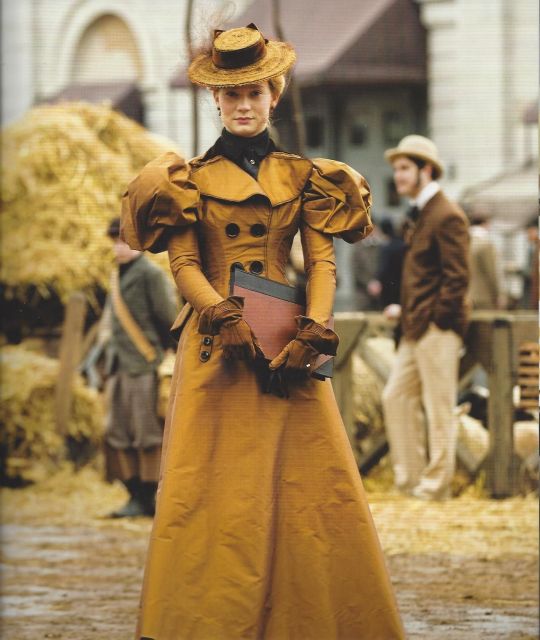
During a very romantically and sensually charged scene, she wears a beautiful evening gown in ivory satin and ornamented with pearls. She enters the room dressed in this lovely dress and a long satin cape of the same color and a pleated collar, her hair delicately swept up. This is Edith’s very own dramatic moment, where she gets to dance with her romantic lead and wears an outfit that is a bit fancier than her usual fare. This dress is still within the very soft and pale color palette that represents Edith. This particular dress is visibly inspired by a painting of the italian artist Giovanni Boldini : The Black Sash (1905), which furthers the fact that this movie’s visual aesthetic is deeper than what first meets the eye. From the delicate color and stark black ribbon down her back.
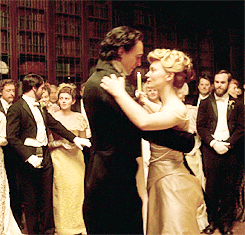
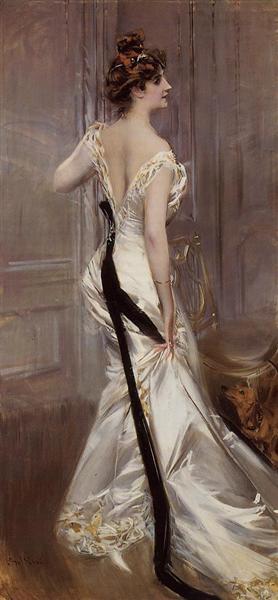
Edith, though, is our ingenue heroine of the gothic romance. One of the main archetypes in the gothic romance is the innocent heroine, a young woman thrown into a situation that’s claustrophobic, scary and dangerous. In every gothic romance, there comes a moment where the heroine leaves her bed in her nightgown, it’s a very striking visual that is the mark of the way we visualize gothic romance. She holds a candle, wearing only the lightest of clothing, and goes to explore the darkness within the walls she inhabits. Her nightgown ends up being the most significant outfit of the whole movie, it truly marks her as a gothic romance heroine, while she roams the corridors at night.
«I’ve never done so many nighties and nightgowns! It’s all about running around in night dresses through long corridors. That also blended to the fabric. When Guillermo said to me, “It’s about a house that breathes,” that’s why we chose the lightest fabric, just a little thing to try and help the storytelling with the idea of the house.»
Edith’s nightgown is striking, the movement of the heavily pleated garment fills the whole screen whenever she moves, it gives her a certain elegance and follows the cohesive silhouette and color palette that was established for her thus far, with its gigantic sleeves and the soft warm and earthy colors of the dressing gown she wears over her nightgown, as she goes down the dark stairs of Allerdale Hall.
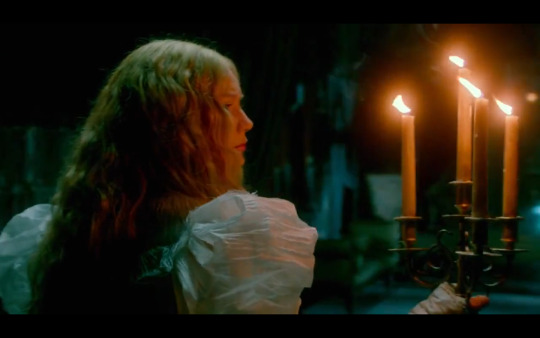
Where Edith is the innocent ingenue, Lucille is the woman hardened by life and misfortunes. She is all sharp angles and contrasts, where Edith is soft and kind, with a seamless color palette. Lucille’s outfits are stuck twenty years in the past and this is very much a narrative device and tool that’s used through the usage of dress and costume design. By showing her in these lavish but old-fashioned dresses. it serves both the purpose of showing how rich and noble the family of the Sharpes is but also, it effectively communicates how they do not have the means to actually follow the current fashionable trends. It shows that Lucille is not one to want to have something of lower quality or cheaper than she thinks her standing deserves. Lucille is a woman that is stuck in the past and is not truly living in the current times. I think that even though these details often necessitate a basic knowledge of the dress silhouettes of the late 19th century and early 20th century, this tactic still visually works because it sets Lucille apart from the rest of the world. It expresses visually how she and her brother are distanced from the world outside.

Her dresses and outfits are dramatic and striking, with the sharp silhouette of the 1880s, with the bustles. The colors of her dresses are always in deep tones, like reds, blues or black. The colors are very rich and vivid. The first dress that we see Lucille wearing is the beautiful red dress during the scene where she plays piano. A silhouette typical of the 1880s with the bustles and the very extravagant detailing. That one dress is a striking red, with a skirt that has a long train. The one very important design detailing is the back of the dress, replicating a spine of sorts in the middle of her back. Those sharp angles forebode a sense of danger that is conveyed strictly through the construction of the dress, and the arrangement of the textiles, the various shades of red fabric intertwined to create this gorgeous pattern that goes down the skirt. Her hair is swept upward and decorated with fine red jewels, and the pale complexion of Jessica Chastain only make the whole ensemble more striking.

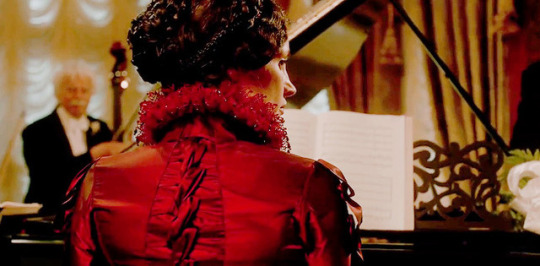
Compared to the two other components of the main trio, Thomas Sharpe’s outfits seem much more muted and sober. His clothes, same as his sister’s, are also too old to be fashionable, but made of high quality materials. The color palettes of his clothes are very dark and deep, with touches of deep blues and greens. When you transpose him into Allerdale Hall, he fits seamlessly within the decor, meanwhile he seemed out of space and out of time in the sunny and modern decor of Buffalo.

A desire for accuracy :
Historical accuracy is always a point of contention when it comes to movies set in a particular historical setting, in this case in the early years of the 1900s. And before we go any further, is historical accuracy even That important when it comes to an effective costume design ? I honestly think historically accurate costumes are very important when it comes to setting your movie. The visual immersion and world building when your story is set in a specific time and place, like for example, in this movie, set in Buffalo, United-States, and England, during the year of 1901, depends on these important elements, such as the costume design and the decor. Especially when a movie is not tending toward the fantastical. For this reason, I really do think that having period accurate costuming, design and makeup is incredibly important when it comes to immersion and creating a visually cohesive world.
Nonetheless, to me, this part of the costume design is less important than what the costume design says about the story and the characters. As I said earlier, costume design is a very subtle but powerful narrative and visual tool to use in filmmaking. And for this reason, I personally think it’s more important for a costume to be efficient when it comes to storytelling than to try to achieve perfect accuracy. Simply put, a costume designer is not someone whose aim is to recreate historical garments perfectly (if this is your jam, I follow a bunch of creators on youtube who actually do that, using historical sewing techniques as well). Their aim is to use the clothing for a storytelling purpose.
There is this thread by fashion historian and curator Hilary Davidson on the subject of ahistorical costume design and this is what she has to say about Crimson Peak:
“Kate Hawley's designs for Crimson Peak (2015) are immersed in artistic trends of the fin-de-siecle, making costumes that embody the period's aesthetic spirit without being completely literal”
When it comes to Crimson Peak, are the costumes historically accurate. For the case of Crimson Peak, the answer is yes and no, at the same time. More than creating historically accurate costumes, Hawley wanted to create an atmosphere, with dreamy costumes that would serve a narrative purpose, and use historical sources as a guideline and inspiration Liberties will often need to be taken to complement the story and to serve the purpose of storytelling nonetheless, I do think that the more researched and accurate the costuming is, the more complex and interesting it can be . and I do think it ended up being SO SO INTERESTING.
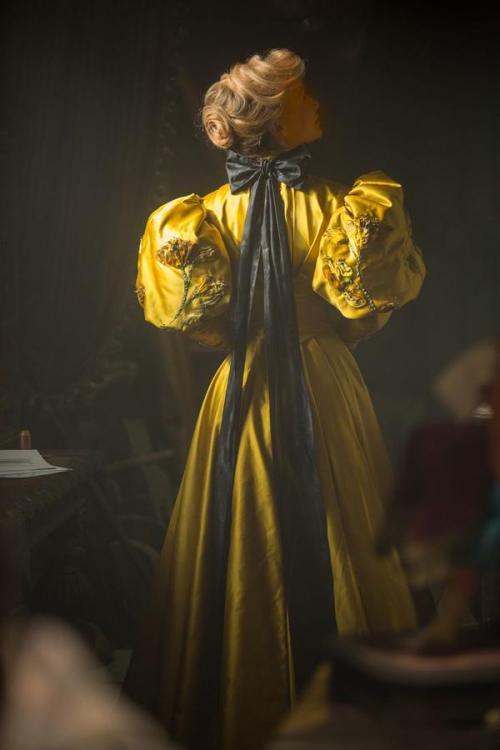
Costume design is more than simply making historically accurate costumes, a costume designer needs to know fashion history and fashion trends, but ultimately, their job is not to recreate exact replicas of the clothing of a certain historical period. What a good costume designer has to do, is to create a wardrobe that fits the story that is being told, and fits within the general universe it's set in and gives you information on the character. What Hawley did was to respect the silhouette of the period, from the foundation garments to the outer garments, and then, when it came to the actual costumes, she could play around with the details to convey a certain mood and narrative. The underpinnings always do define the general structure and shape of a garment, and it’s one of the most important elements when someone wants to construct a historically accurate costume. Even if, like Hawley, liberties are then taken when it comes to the actual clothing, the “spirit” of the clothes is respected. From the corsets and to the petticoats and all the subsequent layers, it was important for Hawley to have all of these elements in a historical accurate way, because it would change the posture and the demeanors of the actors. It shapes the way they stand and the way they move through the different spaces.
Visually, Crimson Peak is a masterpiece of a gothic romance. From the sweeping nightgowns to the imposing and sharp gothic mansions, and the scary ghosts behind the door, Del Toro and his team have created a movie that takes everything that is wonderful about gothic romance to the highest theatrical level, and I, for one, always enjoy this visual and cinematic experience.
58 notes
·
View notes
Text
Top 5 favourite movies of all time continued..
4. The Rocky Horror Picture Show
Just when you thought life couldn’t get any wackier, in 1975, Richard O’Brien brought you the weird and wonderful world of The Rocky Horror Picture Show.

Introducing Brad Majors(Barry Bostwick) and Janet Weiss(Susan Surandon), an ordinary couple from Denton, whose car breaks down during a rain storm and the only place for shelter nearby, is the home of an eccentric transvestite, Dr. Frank-N-Furter(Tim Curry).

Dr. Frank-N-Furter is the most outgoing, wacky and weirdly wonderful person Brad and Janet have ever encountered. On the night of their Annual Transylvanian Convention, Brad and Janet come across a group of outlandish people including servants Riff Raff(Richard O’Brien), Magenta(Patricia Quinn) and groupie Columbia(Nell Campbell). They don’t quite know what their in for.

With the all singing, all dancing, chaotic charade, it’s one that will get you toe tapping every second and the madness will draw you into this unusual yet exciting world.
Tim Curry does an excellent job at potraying Dr. Frank-N-Furter, the most flamboyant character you’ve ever seen and you can’t help but fall in love with him. He’s everything you’d want to avoid yet by the end of this amazing musical, you’ll be dying to be his best friend.

5. Pan’s Labyrinth
Finally, I bring you into the world of yet more monsters. This Spanish-Mexican fairytale tells the story of 10 year old Ofelia(Ivana Baquero), who moves to Morocco with her mother and step father, Captain Vidal, after the Spanish Civil War in 1944.
Ofelia belives a stick insect is a fairy and it is not long before she is brought into a world of magic and enchantment, told that she is a princess from a royal family reincarnated, it certainly is a fairytale that every 10 year old dreams of.

Taking every creature you can imagine and joining them together, this really is one that will have believing.
Fauno(Doug Jones), builds a trusting friendship with Ofelia and tells her what she has to do to prove that she is the royal princess that was lost many years ago. Instructing her to carry out 3 tasks, 3 mystical tasks, Ofelia is quick to find adventure in her new hometown.
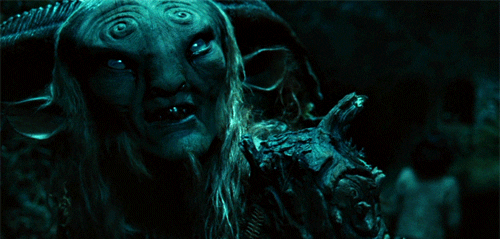
As the tasks get more dangerous, Ofelia also struggles with her pregnant mother who has fallen ill, can she complete the tasks and live out her days as royalty?
I wouldn’t say this is a horror but the creatures leave you with a oddly sickening feeling in your stomach but they definitely add to the character of this movie. Directed by the fantastic Guillermo Del Toro, it really is one that will get you thinking of all the fairytales you grew up with.
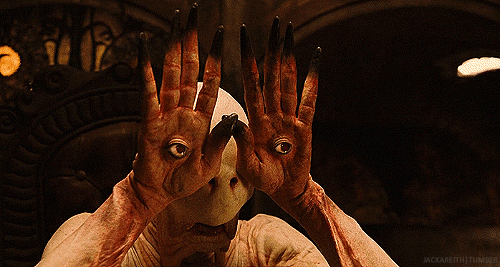
Pan’s Labyrinth is in Spanish with English subtitles, if you can see past that then you’re in for the adventure of a life time. It really is one to watch.
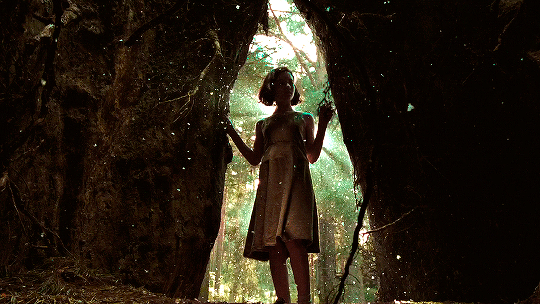
9 notes
·
View notes
Text
The Scotsman and the Mystery of El Bosque Del Fauno, Chapter Eight

The end (or is it?) of Alasdair’s Adventures behind the jump...
The world flickered back into view, and Alasdair found himself stripped bare and strapped to a table, unable to move. For a moment, he thought he was paralyzed, perhaps to witness his own dissection while still living, and despaired; soon, the medicine fog began to clear, and he realized he was simply bound too tightly to move more than his eyes and mouth. He was, unfortunately, still naked.
“You’re finally awake,” said the Guardian, looming over him. “Good. I was worried XJ had gone overboard with the tranquilizers. We didn’t expect you to put up such a fight.”
“Not you again!” Alasdair grumbled. “If you mean to kill me, do it now. I’m not going back to that cell.”
“What a drama queen! I can’t just kill you, you know,” the Guardian said, looking annoyed. “You still have a role to play in the timestream. Well, multiple roles. Which is why you’re here, anyways.”
The Guardian gestured, and a globe emerged. “You’ve seen a globe before, right?”
“I’m not so unlearned I think the world is flat. I’ve sailed--”
“Sure you have! Anyways.” A few more flicks of the being’s hands, and Alasdair eventually realized what he was looking at.

“Holland? Why are you showing me Holland?”
“That’s where our next bubble is headed. So, the Dutch Republic, circa 1608, give or take a few weeks and the change from Gregorian to Julian and maybe a couple of hundred miles in any direction, up, down, or sideways. Do you know anything about that time?”
Alasdair wondered, not for the last time, if he really had died and gone to hell. “War with England, sometimes. War with Spain, more frequently. Pirates in the North Sea. There was some business with tulips and buying on credit. Lots of people roaming about with neckerchiefs starched out like millstones. Rembrandt, of course, and Vermeer. There were some English garrison towns...”
“Groundbreaking. What did you do, read Lonely Planet the night before the test? Well, there goes Bee getting any help with that term paper.” The being gestured again, frowning, and now three portraits hovered between them. They were all of himself, although the dour faces and severe mustaches--now he knew he’d look right awful with a mustache--made him wonder if the Guardian hadn’t gone digging in the McCarric vault.

“You have to choose a new life. So, you’re either of these three pillars of society.”
“Do I have to have a mustache?” Alasdair asked.
“You say that like it’s a bad thing,” the Guardian said. “Yes, you can stay clean-shaven if you’re so horrified by growing a mustache.”
“Do I get to know anything about what I’m getting into?” Alasdair snapped. “I’m not just choosing a new life based on how least poorly-groomed my face would be, am I?”
“I have to explain everything for you, ugh!” The being said. “Next time, I’m picking for you.”
“Next time?!” Alasdair cried. “Oh, ye gods and little fishes, preserve me from ever seeing you again!”
“Ń̶͓̟̤̞̉̽̔ę̵̡̼̮̣̯̜͆̒̇̒̀̒͒͜v̵̭̮̳̝̗̩͐̋̍͆̊̑̔͗͗͝ͅe̷̢̢̝͖̞̟͐̌̑͊͋͛̆̀͝r̸̘̗̭̲̃͊̂̽̀̐͘̚͘͝ ̵̧̮̫̯̙͖̂͋̓̊̾̚m̵̡̬͈͎̀͛̈́͝͝i̶̧̳̮̦̩̹̘̼͊́̽̎͠͝ͅṅ̴̰̪̘͚̩̬̝̮̋̀͌̃͌̓̅̽͘ḏ̷̡̲̟̳̜̙͛̌̂̕͠ ̴̢̩̗̻͎͈̥̆̓̋̌̓͋́͐͘͘ͅţ̴̜̓̒̏͊͌ḧ̴̨̗̻͍̭̔̌̇́͘͜͠à̷̹̼̞͍̪̻̞͖̣͗́t̴͇̳̞͈̭͇̙̀̑̃̎̿͠!̴̢̲̹͍̫̘̎̓̐̀̉̊̈́” A pointer, as if the Guardian were a schoolteacher explaining a lesson, also materialized from nowhere.
“This is William Beaton,” the being said, pointing to the man on the left with a black feathered hat. “He’s an apothecary in Flushing. Unmarried, no children--yet--”
“I can’t be an apothecary,” Alasdair pointed out. “I don’t know anything about medicine. And I don’t speak Dutch! I’m not about to send myself hurtling into the past to poison someone and be burnt at the stake!”
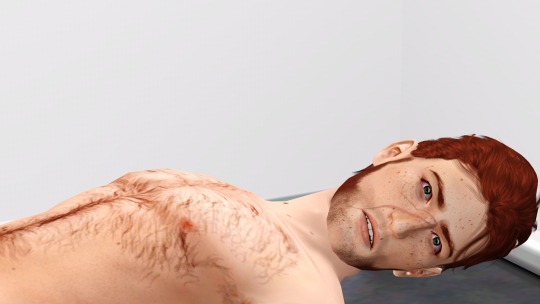
“We’ll teach you everything you need to know.” Somehow, Alasdair was not convinced.
“I don’t think I want to be an apothecary. Who are the other two?”
“This is Red Finbarr of Barra, a privateer--”
“Absolutely not! I’m not ending up in a gibbet!”
“Why are you so picky? Do you know how excited some people would be to become a pirate?”
“Also, my uncle--my father’s family has relatives in the Caribbean,” Alasdair said. “Surely someone as knowledgeable as you--”
“You’re not even biologically related to most of them! And Finbarr was never known to go deeper into the Atlantic than the Faroes--”
“What’s all this past tense and ‘he was known to’? Are these real people I’m replacing?”
“Not really? I mean, they’re more...aggregates. It’s not really identity theft, or anything.”
Alasdair had a horrifying image of someone stealing his life, some hapless outsider (the bewildered apothecary, or worse, a corsair--heaven only knew what the third person would be) beguiled by the Guardian into living out the rest of his days. A surge of anger flashed through him--that was his family, however distant, his commission, his friends, his horse, his books--at least he didn’t have a wife or a sweetheart, to also yield to this imagined impostor. (And, of course, he wasn’t really the type to give someone horns, even in the hypothetical; the thought of some burgher’s wife thinking he really was her Jan or Pieter, dandling someone else’s children on his knee while they had no idea who he really was, made him faintly nauseous.) “I’m not stealing someone’s life! That’s horrid!”
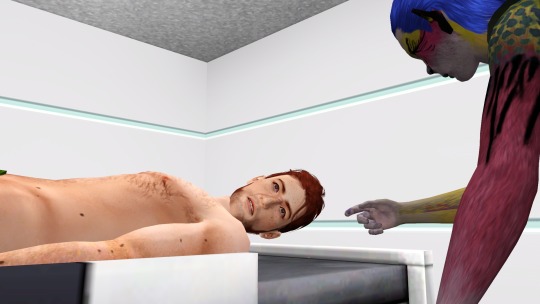
“Fine, Mr. Picky. You don’t want to stay in the Nexus, and then it’s too immoral to go back into reality... Here’s door number three--if you don’t choose one of these, I’m turning you into a goat. A sentient goat.”
“Or you could just kill me. I think it’d be easier,” Alasdair said.
“No. Killing’s too good for you.” The being stabbed the pointer rather viciously this time. “Alexander Cummings, a saffron merchant living in Campvere.”
“That’s a tulip he’s holding, not a saffron.” Alasdair thought for a moment. “Why are you so insistent on these three...guises? Are they going to replace me?”
“No, they all turned up their noses at your life, too,” the Guardian said, rather nastily. “Every person has their own...significance in the time stream.”
“So you want me to muck things up even further, then.”
“I have a few people in the region who also went through the Nexus. I want you to keep an eye on them.”
Alasdair had a mental image of some of the nastier members of his father’s crew...and his mother’s less scrupulous protectors. He did not much care for the idea of being an enforcer for the Guardian’s schemes. (Perhaps, though, a saffron merchant would have less chances for skulduggery than a corsair or an apothecary? Surely this Alexander Cummings wasn’t the type who personally went to the Ottomans to find his goods, or squabbled with Venetians in squalid back rooms!) “And what’s in it for me, if I’m your enforcer?”
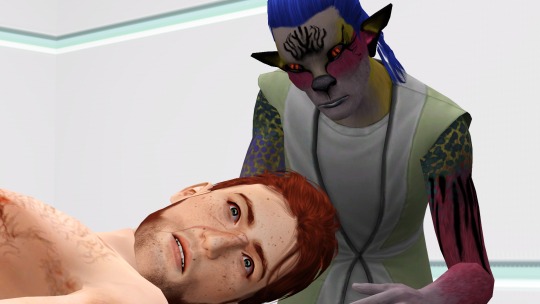
“You’re not sent back to the Stone Age or turned into a goat? Isn’t that enough of a benefit for you?”
“I suppose. But I still don’t speak Dutch, and my hair’s awful short compared to his.”
“We have some time until the rift opens.” The Guardian snapped their fingers, and another group of mechanicals emerged. One had a tailor’s ham in its hands and pins in its mouth; another had a precarious tower of books; a third had a pair of scissors and a curious-looking bottle.
“Meanwhile, you’re going to be getting a bit more...hah...out of date.”
Alasdair was soon dragged off into a room with an array of strange devices throughout. He was pushed onto a platform, and then the harrying began. “Arm out, please,” said one mechanical, who then began measuring him for a new suit of clothes.
“The muttonchops have to go,” said the other, tilting his face its way, and Alasdair flinched at the advancing scissors.
“But they make me look dashing!” he protested, to no avail.

“Compiling trade route statistics,” said the third, its jointed fingers and stalk-like eye breezing through the stack of books with a dizzying speed Alasdair envied. “...Bingely-bing! Personality programming complete.”
“Personality what? I’m fine the way I am, thank you!”
“The hair needs to grow at least five inches at the sides...and he needs a goatee...”
“Och, no.���
“Green wool doublet and cannions, perhaps a nice mulberry sleeve in velvet…”
“No! No velvet! It’s too hot for velvet--”
“Enabling time dilation…”
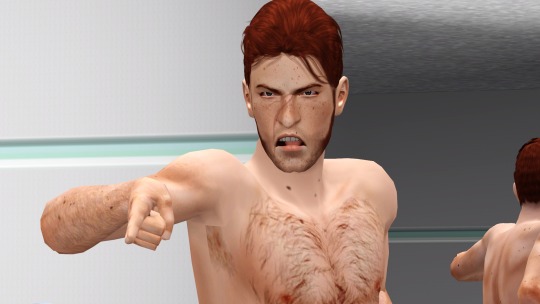
His hair and facial hair grew at an alarming rate; the mechanical with the tailor’s ham whizzed about him, poking and prodding, until suddenly he was encased in a costume that itched and made him long for a good pair of trousers and a shirt. His hair and beard, even his eyebrows and nails, were trimmed as if he were a topiary in a garden. His mind was overwhelmed by new knowledge, facts and grammatical clauses and memories that he knew weren’t his and had never happened to him crammed into his skull until he felt he was going insane. Perhaps he had.
“Time dilation complete.”
Blinking, he looked at the mechanicals surrounding him, his reflection in the glass. That was, indeed, his reflection, he realized with mounting horror.
“What have ye done to me?” he cried, looking at himself. His hair was slicked back and curled under at the ends, grazing the starched millstone ruff he was wearing; he had a mustache and goatee that made him look a pompous fool; he was, indeed, clad in green wool and mulberry velvet. “I look awful!” (Well, his calves looked excellent, but calves did not a man’s appearance make.)
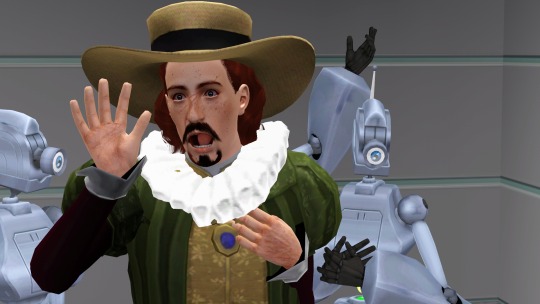
“Stop whining!” said the Guardian, who had come into the room when he was unaware, or perhaps while he was contemplating the disastrous...thing on his upper lip. While some of his men had grown them, falling into the French idea that it was dashing and that their waxed mustaches were simply teeming with masculine derring-do, he had always thought they looked rather foolish. “You look nice in green, at least.”
“But I--”
“It’s time to go, you wouldn’t want to be late to your future, now would you?” The Guardian seized hold of him by the shoulders, clawed hands gripping his thrice-damned velvet sleeves so tightly he thought he might actually be mauled.
With that, he was once more shoved through a dizzying array of corridors until he was brought into a room that resembled something like a canal lock, only there was no water. “Suppose this is a canal lock, and not just another strange little room. Suppose they unleash the canal the instant I let my guard drop. I’d be drowned like a rat,” he thought to himself. “I suppose drowning is better than whatever was meant to happen to me in the woods, but what a choice.”
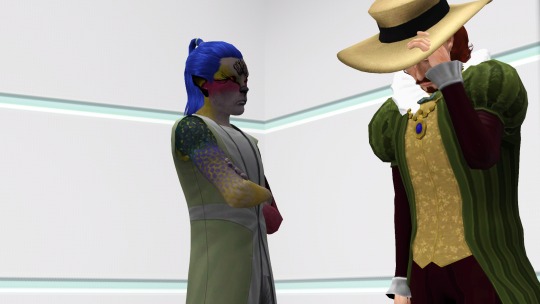
“Must you be so melodramatic?” The Guardian said, stepping behind a partition. “All this frowning and sighing and raising your voice. I can’t wait until you’re inflicting this Lord Byron nonsense on someone else.”
“Wh--how dare you, sir!” Alasdair spluttered. “I’ll have you know--”
Before he could make his reply--certain to have more than a few oaths and imprecations--a bright light flashed; he felt himself pulled once more by an unseen force, forward and back and side to side...
Credits
Now and forever, thanks to all of you who read this and left such nice comments!
Of course, my eternal thanks and gratitude to @danjaley, who was so gracious as to allow Alasdair and Daniel into the McCarric(k) clan, and for creating an excellent stable of poses; @moocha-muses, for letting me borrow Dan O’Doyle; @rennylurant for costuming advice and squealing over renaissance fashions/advice; @studiok2sims, for even more excellent poses and advice; @tolkiensimmer for advice on lighting and costuming; and @treason-and-plot for helping me get “unstuck” on several occasions and finding certain things I needed for the sequel. Why yes, Virginia, there is a sequel. It’s my NANOWRIMO PROJECT. MUAHAHAHAHAHA.
Happy Halloween!!!!!
12 notes
·
View notes
Photo





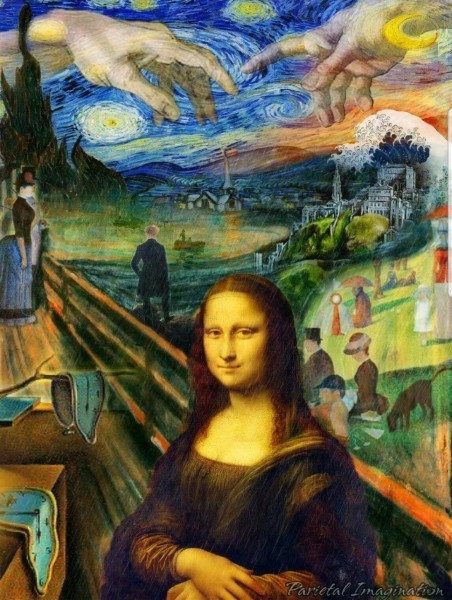
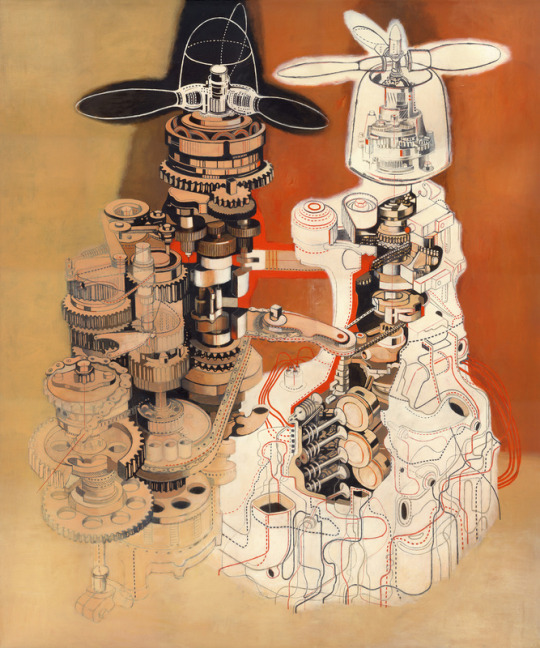
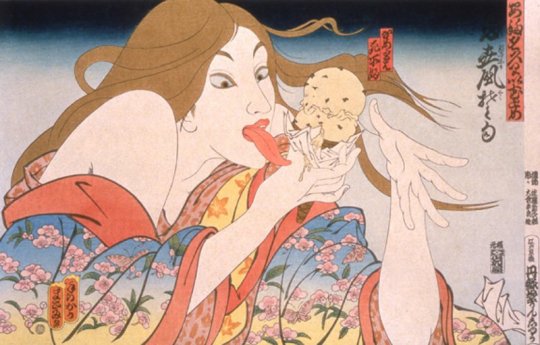


1.) Escaping the Confines of the Museum. Lady Larimer, painted on wall of Ramble Hotel in Denver, Lindee Zimmer, 2018.
2.) Collapsing boundaries between high and low. Poker game, oil on canvas, Cassius Marcellus Coolidge, 1894.
3.) Rejecting originality. Mickey, household gloss on canvas, Damien Hirst, 2012
4.) Jouissance. Ecstasy of Saint Teresa, sculpted marble, Gian Lorenzo Bernini, 1647-1652.
5.) Working Collaboratively. Thank you, digital collage, Nathan Wyburn and NHS workers, 2020.
6.) Appropriating. Ten famous paintings, remix edit of famous art digital, Parietal Imagination, 2019.
7.) Stimulating. Mechanical Simulacra, mixed media, Studio 30, 2017.
8.)Hybridizing. 31 Flavors Invading Japan/ Today’s Special, woodblock printing, Masami Terakoa, 1982.
9.) Mixing media. Nova, mixed media on aluminum frame, Markus Sebastiano, 2018
10.) Layering. Il Sogno del Fauno. Paper cutting and oil on acetate, Elisa Mearelli, 2016.
2 notes
·
View notes
Text
Top 10
Tagged By: @aryn-the-bearheart
Rules: Post your 10 favorite non-human characters from 10 different shows/movies
Tagging: @myriadimagines @lotsoffandomimagines @moonlit-imagines @emcon-imagines @cactiem @lgbtonystarks @randomfandomimagine (and whoever else would like to because I am certainly missing people to tag)
1. Bug’s Bunny - Looney Tunes

2. Elliott - Pete’s Dragon

3. Fauno - Pan’s Labyrinth
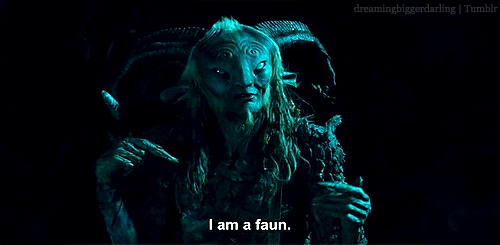
4. Amazonian Fish God - Shape of Water

5. Betelgeuse - Beetlejuice

6. Paul - Paul
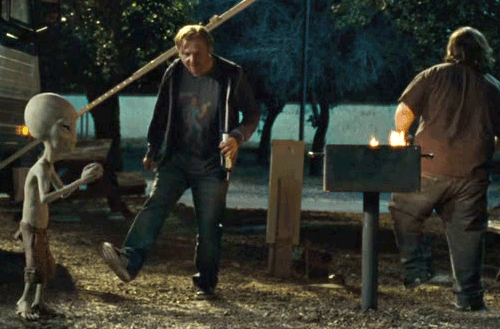
7. C3-PO - Star Wars

8. Brain - Pinky & The Brain/Animaniacs

9. HIM - The Powerpuff Girls

10. Charlotte - Charlotte’s Web
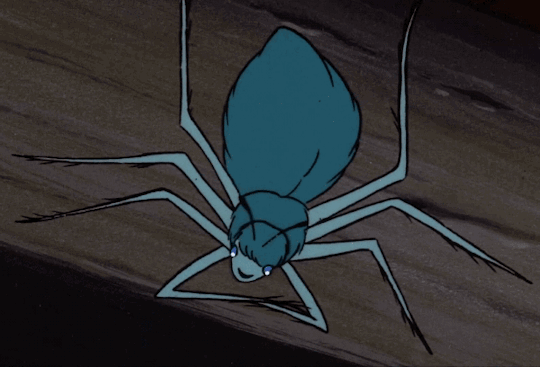
3 notes
·
View notes
Text

NAME : coffee .
FACECLAIM : i don’t really have one but i will only accept willem dafoe as my faceclaim .
PRONOUNS : she / her . but you can call me whatever i don’t mind .
HEIGHT : 1,61 m / short for anyone who uses feet as a measurement .
BIRTHDAY : 7th of december .
AESTHETIC : dark humor . deadpan stares . rolled cigarettes . vodka . the sun setting on the sea . tom waits . black . gold . brown eyes . accents . old dust covered things . old dust covered men . tiny espressos .
LAST SONG YOU LISTENED TO : en el alto del cerro de palomares by estrella morente .
FAVORITE MUSE (S) YOU’VE WRITTEN : shadow moon , hannibal lecter , some ocs .
* GETTING TO KNOW THE ACCOUNT :
WHAT INSPIRED YOU TO TAKE ON THIS MUSE : i watched the movie , i loved everything about it . and honestly i needed to write an ugly horned boy . it was either going to be phillip or the fauno from el laberinto del fauno . but i can’t imagine the fauno speaking in english . so i’m trying to learn the rules of early modern english instead and suffering .
WHAT ARE YOUR FAVORITE ASPECTS OF YOUR CURRENT MUSE : he has fun . he’s just a fun guy . he’s that cool uncle that brings you gifts every time he’s in town in exchange for your soul . but no i mean , i like writing black phillip because i get to explore the more conceptual side of threads and get to focus on other muses’ backstory and weaknesses and desires in order to set the stakes or the mood of the thread . i don’t have any other muse like phillip , it’s fun to have a muse that can’t really empathize to the real modern world . or people . or feelings . you get what i mean .
WHAT’S YOUR BIGGEST INSPIRATION WHEN IT COMES TO WRITING : music . a lot of music . a lot of soundtracks and chelsea wolfe . art . staring at paula rego’s and francisco goya’s work . small things from other movies and tv shows . fairy tales . my mutuals’ writing also inspires me a lot . also goats in sweaters . eerie shit .
FAVORITE TYPES OF THREADS : the ones where i feel like my mutuals understand that black phillip doesn’t have a normal “modus operandi” . he’s not going to just sit down and have a chill chat with you for a whole thread . he doesn’t feel sadness nor passion because he’s not human . i feel like when people understand what my character’s rules and limitations are writing wise the threads immediately become more enjoyable .
BIGGEST STRUGGLE IN REGARDS TO YOUR CURRENT MUSE : i spend a long time just staring at my drafts and trying to find his voice or reasoning for whatever i’m going to write . it’s hard because i love writing black phillip but i also like ... to write fun stuff . not that this isn’t fun but it’s dark serious angsty things are at stake kind of fun . it’s hard to be spontaneous and chillaxed when getting into an evil goat’s head .
TAGGED BY: @gloryshound we support an icon .
TAGGING: you . yEAH YOU ! the mutual who hasn’t done this yet . i see you .
7 notes
·
View notes
Text
Il tesoro delle scienze occulte. Gli stregoni. Il sabba

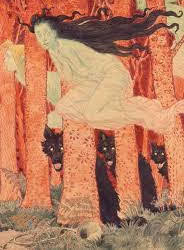

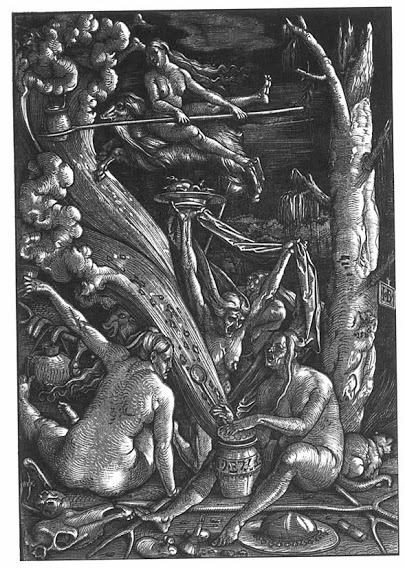
La partenza per il Sabba di Hans Baldung, 1514 Museo di Monaco. Il tesoro delle scienze occulte. Gli stregoni. Il sabba
Una volta compiuti tutti i preparativi nelle loro riunioni parziali, streghe e stregoni potevano avviarsi verso la grane assemblea plenaria: il sabba.
Questa adunata maledetta, una delle pagine più inquietanti del medioevo, rappresentava il capolavoro satanico. Aveva luogo, per l'Europa occidentale, nelle pianure del menhir di Carnac in Bretagna, o in Germania sulla vetta del Bloksberg, o nella chiesa demoniaca di Blokula in Svezia, o ancora, sulla cima del Puy Dòme in Auvergne. Il primo a parlarne nel IX secolo fu il benedettino Réginon de Prum, nel suo De ecclesiasticis disciplinis, in cui raccomanda di indagare se per caso non esistano nella parrocchia persone che affermano di andare alle assemblee di demoni che di notte vanno a cavallo di animali, perché in tal caso si deve provvedere ad allontanare dalla comunità.
Il sabba più conosciuto e più frequentato era certamente quello della montagna di Brocken e Bloksberg nell'Hartz. Questa, una delle regioni della Germania occidentale, fa parte della Foresta Nera e proprio là, nel paese di Schelrke, Goethe pose, attenendosi alla tradizione, il sabba del suo Faust, che è più una scena di fantasia e di critica che non un vero documento.
L'importanza del sabba del Brocken era così grande che verso la metà del secolo XVIII i geografi che disegnavano carte di quella regione non omettevano di disegnarvi anche delle streghe a cavallo del loro manico di scopa.
Una di queste strane carte tedesche fu realizzata nel 1732 da un ingegnere di nome L.S. Bestehorn, e poi fu pubblicata nel 1749 e nuovamente nel 1751 da un editore di Nurimberg che, fa qualche riserva sulle eventuali aggiunte fantastiche dell'incisore.
In mezzo alla carta si innalza maestosamente il monte Brocken, dominante tutte le circostanti montagne. Per il cielo giungono a cavallo di scope, sei streghe, da Holberstadt, da Weringerode, da Zellerfeld e da tutta la Germania. La didascalia annessa alla carta ci informa che vicino si trova il famoso <<Spiazzo delle streghe, dove si svolge il sabba: vicino, un altare consacrato nel passato a un falso dio dei pagani e una fantasia, ambedue utilizzati nelle cerimonie diaboliche.
Il sabba si teneva, nel cuore della notte e l'arrivo delle streghe doveva essere piuttosto sinistro se giudichiamo dall'incisione di Amaliet tratta del quadro di Teniers, che è complementare alla Partenza per il sabba dello stesso maestro. La strega, che si è spogliata delle sue vesti, avanza tra i diavoli e, consegnando il manico di scopa a un demone a forma di ornitorinco, ne riceve in cambio una traccia con cui si rischiara il cammino. Esseri fantastici, pipistrelli e barbagianni la circondano, uno strano omuncolo se ne sta ritto nella sua minuscola statura davanti a una lanterna posta a terra, mentre un cartello, che si staglia contro il cielo come un pipistrello, indica il limite del territorio satanico.
L'Assemblea del sabba non seguiva tuttavia un rito fisso e invariabile. Se è pur vero che in sostanza la cerimonia era sempre la stessa, non seguì però un rituale fisso. Satana, vi si presenziava di persona, sotto forma di rospo piumato, di corvo, di gatto nero o più spesso di caprone.
L'imprigionamento avvenuto nel 1460 ad Atras di diversi individui accusati di <<vaulderie>, cioè di patto col demonio, era motivato dal fatto che, essi andavano al sabba <<e lo ritrovarono un diavolo in forma di caprone, di cane, di scimmia, e qualche volta d'uomo>>. Alcune di queste forme bizzarre le vediamo nelle incisioni, tratte da un libro del R.P. Guaccius intitolato Compendium Maleficarum, pubblicato a Milano nel 1626. Nella prima illustrazione, in cui riceve l'omaggio degli stregoni giunti al sabba, il diavolo siede su un trono e presenta fattezze inequivocabilmente caprine. Nella seconda, in cui rivolge un discorso edificante ai suoi seguaci, pur mantenendo più o meno quella forma, ha un muso più lungo, che rassomiglia quasi a un becco d'uccello. Nell'altra ancora, in cui richiede imperiosamente un patto ai nuovi adepti, presenta un muso più schiacciato, quasi scimmiesco.
Abbiamo una descrizione
del sabba che avveniva tutti i mercoledì e i venerdì dell'anno sul Puy de Dome; tale descrizione è opera d'un consigliere del Parlamento di Bordeaux del XVII secolo, Florimond de Rémond. Nel suo libro, L'Antipapesse, egli racconta che in un campo, verso la mezzanotte della vigilia di San Giovanni, si riunirono circa sessanta persone intorno a un caprone che era il diavolo, quindi tutti andarono a porgergli uno sconcio saluto. Il caprone aveva una candela nera tra le due corna, ch'egli aveva acceso <<provocando il fuoco con la coda>>, tutti i persenti che portavano una candela simile l'accesero a quella del caprone. <<In quell'assemblea si diceva la messa in cui colui che officiava volgeva le spalle all'altare, era vestito d'una cappa nera senza croce e innalzava una fetta di rapa colorata di nero invece dell'ostia>>.
Una testimonianza ancora più attendibile è quella della reverendissima madre Francoise-Madeleine de Chaugy, che fu segretaria di santa Giovanna di Chantal e superiora del primo monastero della visitazione. In un libro sulla vita delle religiose di questo monastero, che ella pubblicò ad Annecy nel 1659, si trovano i seguenti particolari a proposito di Anne-Jacqueline Coste, una delle più devote di quelle monache. Era una donna di montagna e <<durante la notte della festa di San Giovanni Battista, questa devota contadina e le sue consorelle udirono un rumore e un frastuono spaventoso; guardando da tutte le parti per vedere da dove potevano venire quelle urla orribili e quelle strida d'animali di ogni genere, scorsero ai piedi della montagna figure di gatti, caproni, serpenti e draghi, e d'ogni altro tipo di animali impuri e immondi, che tenevano il loro sabba, accoppiandosi, profferendo le parole più infami e sacrileghe che si possano immaginare e riempiendo l'aria delle più esecrabili bestemmie>>.
Ci sono due principali rappresentazioni del sabba: una è una stampa dell'incisore polacco I.Zianko, che si trova talvolta accostata ad alcuni esemplari dell'oscuro libro di Pierre de Lancre: Tableau de l'incostance des mauvais anges et démons, où il est amplement traicté des sorciérs et de la corcellerie, Parigi, 1610; l'altra è quella del quadro si Spranger, di cui è andato perso l'originale ma di cui esiste un'eccellente incisione nella bizzarra opera dell'abate Bordelon, Histoire des imaginations extravagantes de Monsieur Oufle, Amsgterdam, 1710. Queste due composizioni sono animate da un movimento impetuoso, da quell'irresistibile turbinio e da quella febbrile agitazione scomposta e folle che trascina tutti i personaggi in un giardino infernale, simile a quello che avveniva durante i baccanali e i saturnali degli antichi. Ambedue racchiudono le stesse scene e particolari identici; la prima, quella di Ziarnko, è accompagnata da una scritta che ci permette di esaminarla traendone nozioni precise, come ben di rado avviene in questo campo.
Il sabba è presieduto da Satana che, è seduto su un seggio e ha la forma di caprone, con cinque corna di cui quella mediana arde per accendere tutte le candele e i fuochi del sabba>>>. Questo caprone contrassegnato con la lettera A è veramente e completamente un animale.
L'aspetto di caprone conferito a Satana nel sabba è un evidente retaggio dell'antichità: il Mendés dell'Egitto decadente è un miscuglio di fauno, satiro e Pan che tende a diventare la sintesi definitiva dell'antidivinità. Il caprone è talvolta la cavalcatura di Venere ed è l'animale sacrificato a Dioniso che si veste con la sua pelle; presso gli ebrei esso era il capro espiatorio di tutti i peccati d'Israele; per questo miscuglio di paganesimo e storia biblica, esso è l'entità invariabile e consacrata che presiede a tutti i sabba dell'Europa.
Al di sopra della lettera B, <<La regina del sabba incoronata>> e, a sinistra del diavolo, <<una meno favorita>>. Sono le streghe privilegiate che appaiono anche al sabba di Spranger, e una delle quali è curva verso il bracciolo del trono di Satana.
Egli ha infatti tra le streghe le favorite con le quali spesso tiene anche il commercio amoroso. L'intimità dei
diavoli con le donne è cosa frequente e infatti Ulrich Molitor nel suo severo libro ci mostra una strega che stringe amorosamente tra le braccia di un uomo che non sospetteremmo essere un demonio se non fosse per gli artigli da uccello rapace che tradiscono la sua cera identità.
Davanti al trono del caprone satanico, segnato con la lettera C, vediamo una strega che presenta un bambino, certamente rubato. Satana è molto avido di queste reclute in tenera età, tanto che le streghe se non potevano rubare il bambino d'una vicina, erano costrette a portare al sabba, se ne avevano, i propri figli, a rischio altrimenti di fare cattiva figura agli occhi del padrone dell'inferno. Nel quadro di Spranger una delle due streghe favorite presenta infatti un bambino al diavolo e questa stessa scena la ritroviamo nell'opera dell'eccellente padre Guaccius, che ci servirà da guida sicura in tutte le cerimonie del sabba. Il diavolo dava un padrino e una madrina al bambino, gli faceva rinunciare a Dio e gli apponeva sull'occhio sinistro un marchio con la punta d'una delle sue corna.
Ed ecco ora nell'angolo di destra in basso il pranzo del sabba, contrassegnato con la lettera D. Alcune streghe sostenevano che la tovaglia era dorata e che le vivande e i vini serviti erano squisiti, mentre molti autori tre cui il de Lancre derivano la scena in termini poco invitanti: <<Ecco le convitate dell'assemblea, ciascuna con un demonio vicino e in questo pranzo non si serve altra carne che di carogne e di impiccati, cuori di bambini non battezzati e animali immondi; di tutto insomma all'infuori delle cose comuni dei cristiani, e tutto insipido e senza sale>>. Sono proprio le membra squartate d'un bambino che si vedono nel nefasto piatto, come nella stampa di Spranger, ma il pasto di cui padre Guaccius ci ha lasciato una preziosa illustrazione: è servito da diavoli maschi e femmine e i piatti ch'essi portano sono numerosi e appetitosi e sembrerebbe quindi rendere ragione a quelle streghe che sostenevano di ricevere al sabba un trattamento di prim'ordine.
Vicino ai convitati si notano dei personaggi ammessi soltanto a titolo di spettatori: sono <<parecchie povere streghe confinate negli angoli che non osano avvicinarsi alle grandi cerimonie>>. <<Dopo il pasto viene il ballo, perché infatti dopo essersi saziati di carni, o evanescenti e illusorie o dannose e abominevoli, ciascun demonio conduce la sua vicina di tavola sotto quell'albero maledetto e là, l'uno col viso verso il centro della danza, e l'altro verso l'esterno, danzano, ballano e si divertono con i movimenti più indecenti e spudorati>>. L'artista ha messo un secondo gruppo di danzatrici <<donne e fanciulle che danzano tutte col volto volto verso l'esterno del circolo, i musicanti suonano gli strumenti comuni dell'epoca: viola ad arco ricurvo, violoncello, corno, flauto e arpa. Anche nel sabba del padre Guaccius si balla al suono di un violoncello, che un musicista strimpella standosene accovacciato tra i rami di un albero ma con meno foga che le quadro di Spranger, dove la danza ha veramente l'andamento scatenato e galoppante che conviene a una tregenda. I quattro personaggi che davanti al trono diabolico eseguono danze acrobatiche con pericolose piroette, il vero ballo satanico, il vero tripudium, degli antichi, in cui l'individuo, sotto l'influenza dello spirito che lo possiede, scopre in se stesso risorse muscolari ignote e si lancia in esercizi che sarebbe incapace di compiere in condizioni normali, come quello stregone che con grande stupore dei suoi vicini e delle comari della cittadina olandese esegue sul proprio letto un ballo da sabba, la vignetta 'T Olgerkut Mom-Ansight der Tooverye, Amsterdam, Andriés van Damme, 1725, conservato nella Biblioteca dell'Aia.
Abbiamo già parlato del crogiuolo delle streghe che appare in tutte le assemblee preliminari al sabba. Lo ritroviamo anche nel sabba stesso e de Lancre fornisce la seguente spiegazione: <<Ecco sul fuoco la caldaia per preparare ogni sorta di veleni che facciano morire o soffrire l'uomo e che danneggiano il
bestiame, una tiene i serpenti e il rospo in una mano, l'altra taglia loro la testa e li scortica quindi li getta nel crogiuolo>>.
Il ruolo di questa caldaia è importantissimo perché alcuni addirittura dicono che esso sia l'essenza stessa del sabba ed è per questo che lo ritroviamo in primo piano sul forntespizio di due opere del XVII secolo in cui si parla diffusamente dei diavoli e del sabba: il primo di Hemigus Grosius intitolato Magica de Spectris et apparitionibus Spiritum, Leida 1656; il secondo di Louis Lavater, eminente teologo come dice il titolo, e che tratta De Spectris, Lemuribus varsique prestagitionibus, Tractatus vere aurucs, Leida 1659.
Durante tutto il tempo del sabba, streghe arrivano sui manici di scopa e altre su caproni, queste ultime, più rare rappresentano le privilegiate. I becchi che esse montano non sarebbero altro che demoni trasformati e su un caprone montò la strega della cattedrale di Lione, e ancora su un giovane caprone, a cui non sono ancora spuntate le corna, cavalca lo stregone che ci presenta Ulrich Molitor e che, attraverso un paesaggio della Svezia, si reca a qualche misteriosa riunione dei suoi confratelli.
Il becco è anche la cavalcatura che padre Guaccius assegna alle streghe. E ce le mostra mentre superano colline e valli per accorrere al richiamo del padrone. Pare che streghe e stregoni abbiano un marchio impresso da Satana su qualche parte segreta del corpo, dove una specie di dolorosa fitta li avverte quando devono recarsi al sabba.
Nell'incisione del sabba di Ziarnko un gruppo compatto di personaggi molto eleganti se ne stanno, senza partecipare apparentemente a nessuna delle attività. <<Sono, grandi signori e le grandi dame, e le altre persone ricche e potenti che trattano gli affari del sabba nel quale comparivano velate le dame mascherate per rimuovere sempre nascosti e incogniti>>. Il sabba era frequentato da persone d'alto rango e si sbaglierebbe se si pensase che gli spettatori e gli attori fossero soltanto <<misere streghe>> o genticola ingnorante.
Si può vedere nelle numerose incisioni che qui presentiamo dell'opera di padre Guaccius che i personaggi del sabba sono vestiti riccamente, alla moda opulente dell'epoca di Luigi XIII: brache a sbuffo con nastri alle giarrettiere, sottane con guardinfante, colli e collari con rigonfi e pieghettature, la cui complicata inamidatura incornicia il viso in una spumeggiare di merletti, come nei ritratti di Pourbus, Mierevolet e van Dyck. Molti signori <<dame onorate>>andavano non di meno al sabba e ritenevano un onore grande quello di essere prescelti a reggere la coda del diavolo nelle processioni grottesche che vi avvenivano; ci fu persino un certo curato d'Acain, in Guascogna, oggi ridente e località del cantone di Saint-Jean-de Luz, che rinunciò al sacerdozio divino per officiare solennemente al sabba.
La didascalia, descrive il gruppo dove secondo quanto spiega de Lancre, <<ci sono piccoli bambini che con bacchette e verghe, a una certa distanza dalle cerimonie custodiscono i greggi di rospi che le donne hanno l'abitudine di portare al sabba>>. A questa innocente occupazione infatti erano messi i novizi, già presentati al diavolo, ma ai quali la tenera età non permetteva di partecipare attivamente a veri e propri riti demoniaci. Vi venivano ammessi più tardi, e i diavoli approfittavano persino di questa occasione per unirli, come qui vediamo, in vincoli incestuosi.
Avvenivano al sabba al tre cerimonie particolari, la maggior parte delle quali erano abitudinarie nei patti conclusi col demonio al di fuori del sabba. I nuovi arrivati venivano marcati dal diavolo con un segno d'unghia sotto la palpebra sinistra. Nella stampa dell'incisione la sua tavola sarebbe stata capovolta, ci presenta qui un Satana che incide il suo segno sull'occhio destro del novizio.
Il demonio poi obbligava i nuovi amici a camminare sulla croce; essi vengono rappresentati ciechi, in questo i loro occhi erano effettivamente chiusi alla luce divina. Veniva quindi consegnato loro un libro nero in cambio del libro dei Vangeli, a cui essi rinunciavano, e
venivano persino ribattezzati con qualche misterioso liquido. Satana infine incominciava personalmente a spogliare i <<nuovi stregoni>> e li invitava a mettersi nel costume adamitico lo stesso adottato da molti dei partecipanti al sabba, nonostante non fosse questa una regola generale. Quando streghe e stregoni arrivavano al sabba si affrettavano ad andare a rendere omaggio al diavolo, omaggio che consisteva in una cerimonia, omessa volontariamente dallo Ziarnko nella sua magistrale opera sul sabba, ma che Spranger, ha rappresentato senza vergogna. Tale cerimonia consisteva nel dare un bacio sul posteriore del diavolo, insigne onore in cambio del quale il diavolo donava alla fedele un pidocchio d'argento. C'erano streghe fanatiche che ripetevano questo rito diverse volte nel corso del sabba e anzi baciavano il deretano di tutti i demoni che incontravano: nell'incisione dello Spranger ne vediamo, con una candela in mano, bacia quella specie di secondo volto d'un demonio.
Le streghe giustificano questo loro gesto: <<Non è un deretano>>, dicevano con santa indignazione <<ma un secondo viso ch'egli ha sotto la coda!>>. Esse avevano perfettamente e teologicamente ragione; abbiamo segnalato l'esistenza di questo secondo volto del diavolo delle cattedrali, che spesso ne aveva un terzo sul ventre. Padre Guaccius tuttavia non ha tenuto conto di questa sottigliezza e quello che la nobile dama lascia nella figura ch'egli disegnò per il suo libro.
Questa era nelle sue grandi linee l'inimitabile, augusta e grottesca cerimonia del sabba, che stende un velo d'orrore su tutta l'Europa del XV secolo dal XVII secolo e che trascina nel turbine in personaggi più umili e quello più illustre che turba le menti di teologi e magistrati, che ispira agli artisti le loro più efficaci composizioni, perché inquieta persino sovrani e re, come Giacomo II d'Inghilterra, che si preoccupò di servire una feroce requisitoria contro le streghe. Esistevano a Parigi sotto Carlo IX, a quanto si dice, trentamila stregoni, e centomila in tutta la Francia. Non è difficile immaginare quale spaventoso ballo scatenato doveva fare una tale orda nelle notti fatidiche, sulla vita delle montagne maledette o ai crocicchi delle grandi strade.
La descrizione è conforme a questo ci hanno tramandato su tale argomento da una parte i demonologhi e dall'altra le numerose rappresentazioni che di secolo in secolo si rinnovano con scrupolosa esattezza il che dimostra il persistere d'una tradizione e di forme rituali scrupolosamente osservate.
Nel corso del sabba avevano luogo anche alcune cerimonie particolari, ma avremo occasione di descriverla nel parlare di patti e di altre opere sataniche.
Qui ci limitiamo a menzionare, alcune illustrazioni del sabba, disegnate o incise nel XVIII secolo, che si distaccano totalmente dal sabba tradizionale o sono parto gratuito dell'immaginazione di artisti che non si sono curati di documentarsi nemmeno in minima misura. Appartiene a questa categoria il sabba di Gillot; si tratta d'una bellissima composizione di innegabile effetto decorativo, ma nella quale non si ritrovano gli elementi essenziali del sabba classico. Vediamo, a destra un caprone incoronato di fuori che dà la mano a una donna che probabilmente è la regina del sabba, ma egli dirige il ballo in modo strano, senza scomodarsi dal sedile di pietra sul quale troneggia. Una strega appollaiata su un'alta roccia e con un gufo sulla testa e lo zodiaco a bandoliera legge il libro di magia, con grande gioia dei diavoli e di quel caprone simile a un anagro che sembra ridere dello scherzo d'un diavolo.
#Annalisa Lanci#Il tesoro delle scienze occulte#il sabba#occultismo#superstizione#buio#buio tra cielo e terra#tra cielo e terra
1 note
·
View note
Photo

CINEMA Mune, O Guardião da Lua Título original: Mune, le Gardien de la Lune De: Alexandre Heboyan, Benoît Philippon Com: Omar Sy (Voz), Izïa Higelin (Voz), Michael Gregorio (Voz) Animação M/6 FRA, 2015, Cores, 86 min. SINOPSE Num mundo mítico das fábulas e histórias de encantar com uma faceta um pouco selvagem, vive Mune, um pequeno fauno lunar muito tímido e pouco seguro de si. Quando é nomeado Guardião da Lua, responsável por trazer a noite e tomar conta do mundo dos sonhos, vê-se obrigado a aceitar a responsabilidade. Quando o Guardião das Trevas decide roubar o Sol, o pequeno fauno descobre em si uma coragem que nunca imaginou possuir. Assim, com a ajuda do arrogante Sohone, o Guardião do Sol, e da sua amiga Cire, uma frágil criatura de cera, Mune vive uma aventura extraordinária que mudará, para sempre, a forma como se vê a si mesmo. Com realização de Alexandre Heboyan e Benoît Philippon, um filme de animação para toda a família que, na versão original, conta com as vozes de Michael Gregorio, Izïa Higelin e Omar Sy. Na versão dobrada em português as vozes são de Pedro Górgia, Isabel Silva e Nuno Eiró. LINK https://cinecartaz.publico.pt/Filme/353964_mune-o-guardiao-da-lua OPINIÃO Filme Infantil, Juvenil Imagens interessantes. http://lopesca.blogspot.com/2021/03/cinema-mune-o-guardiao-da-lua.html https://www.facebook.com/LopesCa.Blog/photos/a.1000626889952554/4466691740012701/?type=3
0 notes
Photo

Ma participation pour le #CharaDesignStepChallenge J'ai choisi la classe des Berserker, en imaginant un "Codex" (le codex furor) qui déclencherait leur folie combattante une fois ouvert. #XPPENTablette #LDLC #Digitalpaintingschool #Kme #BBE #Step #harpie #harpy #fauno #faune #centaur #centaure Part. 1 https://www.instagram.com/p/CL12KKhj0oG/?igshid=yt1zaybr3nmi
#charadesignstepchallenge#xppentablette#ldlc#digitalpaintingschool#kme#bbe#step#harpie#harpy#fauno#faune#centaur#centaure
0 notes